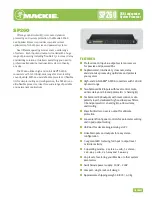
Page-24
RTC-72421/72423
2. Notes on mounting
(1) Soldering temperature conditions
i. RTC-72421
Solder is used on the built-in crystal unit. Therefore, if the temperature within the package exceeds 150°C, the
characteristics of the crystal unit will be degraded and it may be damaged. Either use a soldering bath or solder by
hand. If you need to use vapor-phase or infrared reflow soldering, use the RTC-72423 module instead.
Soldering conditions: No higher than 260°C for no more than 10 seconds (on the leads only)
ii. RTC-72423
If the temperature within the package exceeds 260°C, the characteristics of the crystal unit will be degraded and it
may be damaged. Therefore, always check the mounting temperature before mounting this device. Reconfirm if
the mounting conditions are later changed.
Soldering conditions: No higher than 260°C for no more than twice at 10 seconds, or no higher than 230°C for no
more than 3 minutes.
Examples of SMD soldering conditions
Infrared reflow
Vapor-phase reflow
(When increasing the temperature of resin, make sure that these curves are as gentle as possible.)
(2) Mounting equipment
While this module can be used with general-purpose mounting equipment, the internal crystal unit may be damaged
in some circumstances, depending on the equipment and conditions. Therefore, you should confirm that the module
will survive the mounting process that will be used before actually using this module in full-scale production. In
addition, if the mounting conditions are later changed, the survivability of the module should be reconfirmed under the
new conditions.
(3) Ultrasonic cleaning
There is a possibility that the crystal unit will be damaged by resonance during ultrasonic cleaning. Since the
conditions under which ultrasonic cleaning is carried out (the type of cleaner, power level, time, state of the inside of
the cleaning vessel, etc.) vary widely, this device is not warranted against damage during ultrasonic cleaning.
(4) Mounting orientation
This device can be damaged if it is mounted in the wrong orientation. Always confirm the orientation of the device
before mounting.
(5) Leakage between pins
Leakage between pins may occur if the power is turned on while the device has condensation or dirt on it. Make sure
the device is dry and clean before supplying power to it.


































